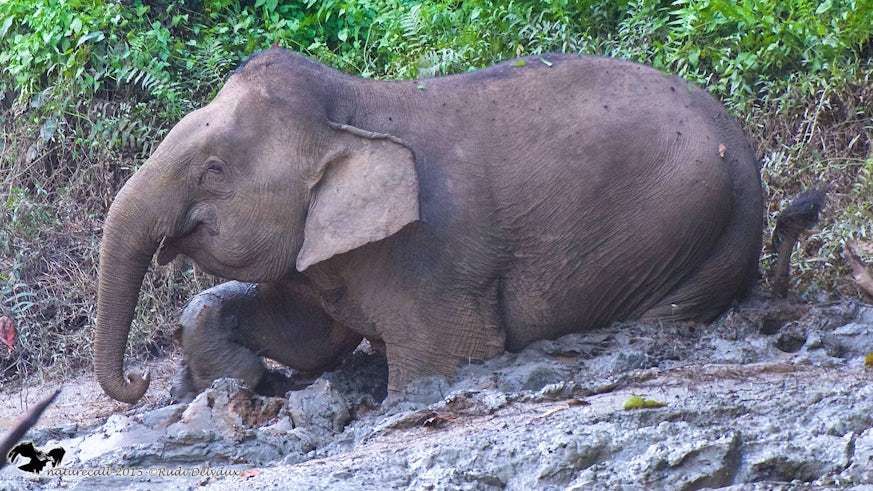Shedding new light on the mysterious origin of Bornean elephants
17 January 2018

The Bornean elephant is a subspecies of Asian Elephants that only exist in a small region of Borneo, but their presence on the southeastern Asian island has long been a mystery.
However, elephants might have arrived on Borneo at a time of the last land bridge between the Sunda Islands in Southeast Asia, a new paper by a team of experts including Professor Mike Bruford and Dr Benoit Goossens of the Sustainable Places Research Institute published in Scientific Reports has found.
Dr Benoit Goossens, joint first co-author of the paper said: “It has been thought that the Bornean elephant could have either been recently introduced by humans around 300 years ago, or they could have diverged from Asian elephants a long time ago.
“Historical records do show that neighbouring Sultans offered elephants as gifts to the Bornean Sultan in the 17th century, and therefore current elephants could be non-native elephants that have become feral.
“There is also genetic research that demonstrated that Bornean elephants are very different from that of the other Asian elephants, suggesting that there was an ancient separation, possibly around 300,000 years ago. However, no elephant fossils have been discovered in Borneo."
The study, conducted at Instituto Gulbenkian de Ciência in collaboration with researchers from Danau Girang Field Centre at Cardiff University, used genetic data analysis and computational modelling to study the history of these animals.
Reeta Sharma, researcher at Instituto Gulbenkian de Ciência, Portugal and joint first co-author of the paper said: “Our results suggest that the most likely scenario to have occurred is a natural colonization of Borneo around 11,400 to 18,300 years ago.
"This period corresponds to a time when the sea levels were very low and elephants could migrate between the Sunda Islands, a Southeastern Asia archipelago to which Borneo belongs. We cannot exclude more complex scenarios, but a historical human introduction seems very improbable, and so does a very ancient arrival.”
The Bornean elephant is an endangered species, with less than 2,000 surviving in an increasingly fragmented environment, and regular reports of the elephants being poisoned or killed.
The researchers note that the results of the study are important not only in understanding the unique colonization of Borneo by elephants, but also for their long-term conservation.
This work was conducted at Instituto Gulbenkian de Ciência in collaboration with researchers from Cardiff University, Danau Girang Field Centre, Sabah Wildlife Department, University of Copenhagen, University of Leicester, and University of Bristol. This study was supported by Fundação para a Ciência e a Tecnologia (FCT, Portugal), Laboratoire d'Excellence (LABEX) (France), Laboratoire International Associé BEEG-B (France), Darwin Initiative for the Survival of Species (UK), US Fish and Wildlife Service Asian Elephant Conservation Fund, Elephant Family and Columbus Zoo, and by Danish Research Council and Villum Foundation.